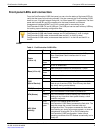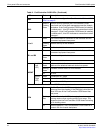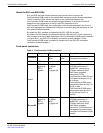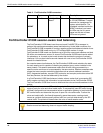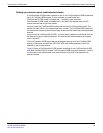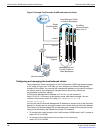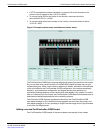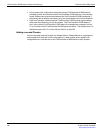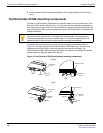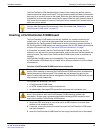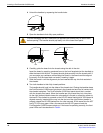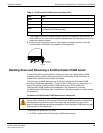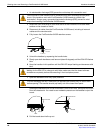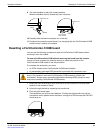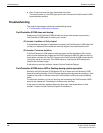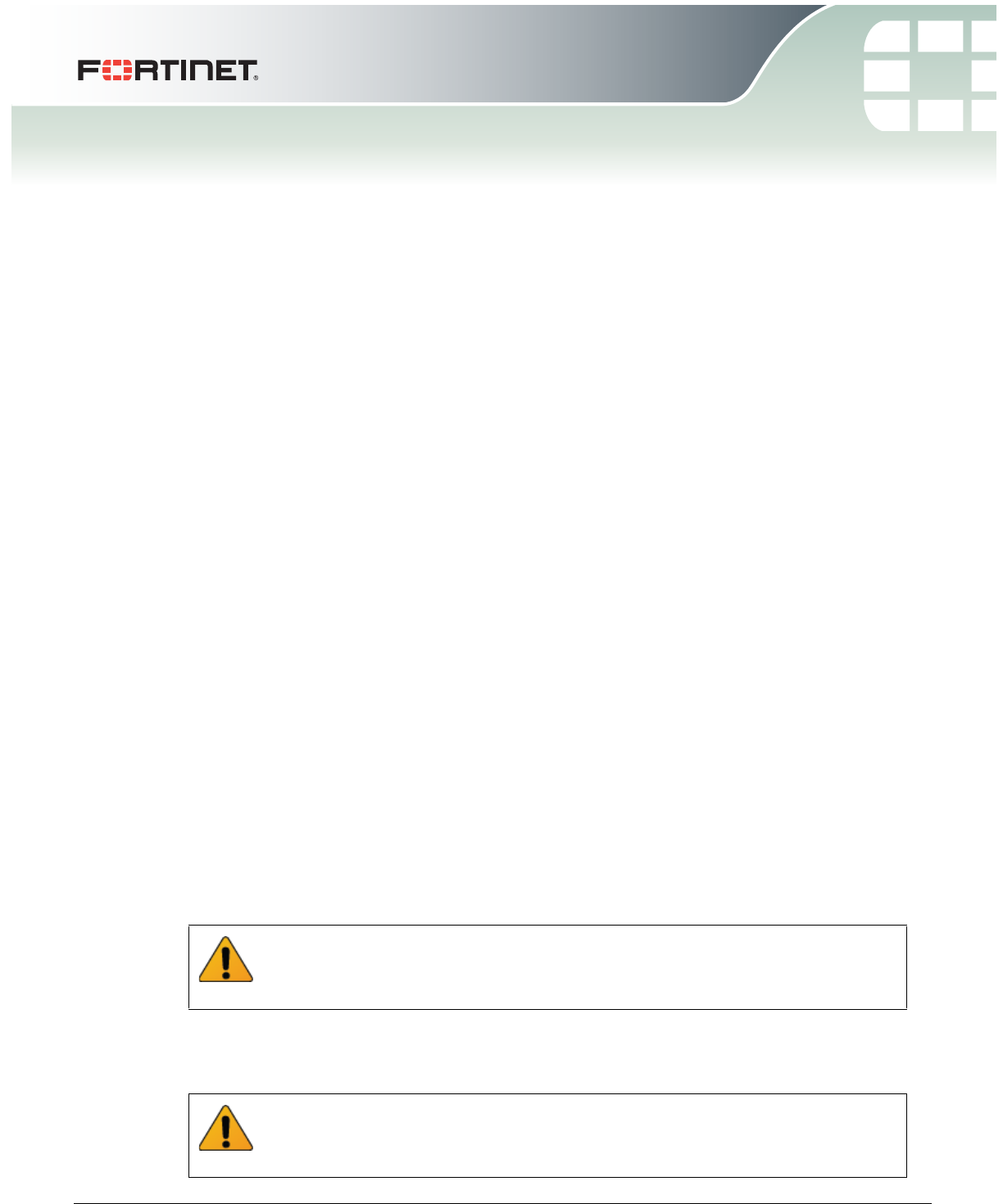
FortiController-5103B Session-Aware Load Balancer Guide
10-500-161552-20140822 15
http://docs.fortinet.com/
FortiController-5103B
Hardware installation
Before use, the FortiController-5103B board must be correctly inserted into the first or
second hub/switch slot of an Advanced Telecommunications Computing Architecture
(ATCA) chassis that can provide sufficient cooling and power as well as appropriate base
and fabric backplane connections.
This chapter describes:
• Installing SFP+ transceivers
• FortiController-5103B mounting components
• Inserting a FortiController-5103B board
• Shutting down and Removing a FortiController-5103B board
• Resetting a FortiController-5103B board
• Troubleshooting
Installing SFP+ transceivers
The FortiController-5103B board ships with two SR SFP+ transceivers that you must
install to connect the FortiController-5103B front panel fabric or base channel interfaces
to a network. The SFP+ transceivers are inserted into cage sockets numbered F1 to F8
for the fabric channel or B1 and B2 for the base channel on the FortiController-5103B
front panel. You can install the SFP+ transceivers before or after inserting the
FortiController-5103B board into a chassis.
You can install the following types of SPF+ transceivers for connectors F1 to F8:
•SFP+ SR
•SFP+ LR
To install SFP+ transceivers
To complete this procedure, you need:
• A FortiController-5103B board
• Two or more SFP+ transceivers
• An electrostatic discharge (ESD) preventive wrist or ankle strap with connection cord
1 Attach the ESD wrist strap to your wrist and to an available ESD socket or wrist strap
terminal.
2 Remove the caps from SFP+ cage sockets on the FortiController-5103B front panel.
FortiController-5103B boards must be protected from static discharge and physical
shock. Only handle or work with FortiController-5103B boards at a static-free
workstation. Always wear a grounded electrostatic discharge (ESD) preventive wrist
strap when handling FortiController-5103B boards.
Handling the transceivers by holding the release latch can damage the connector. Do
not force the transceivers into the cage slots. If the transceiver does not easily slide in
and click into place, it may not be aligned correctly. If this happens, remove the
transceiver, realign it and slide it in again.



